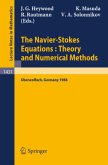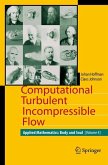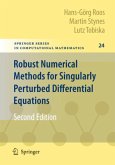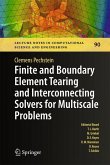This is a book on numerical methods for singular perturbation problems - in part- ular, stationary reaction-convection-diffusion problems exhibiting layer behaviour. More precisely, it is devoted to the construction and analysis of layer-adapted meshes underlying these numerical methods. Numerical methods for singularly perturbed differential equations have been studied since the early 1970s and the research frontier has been constantly - panding since. A comprehensive exposition of the state of the art in the analysis of numerical methods for singular perturbation problems is [141] which was p- lished in 2008. As that monograph covers a big variety of numerical methods, it only contains a rather short introduction to layer-adapted meshes, while the present book is exclusively dedicated to that subject. An early important contribution towards the optimisation of numerical methods by means of special meshes was made by N.S. Bakhvalov [18] in 1969. His paper spawned a lively discussion in the literature with a number of further meshes - ing proposed and applied to various singular perturbation problems. However, in the mid 1980s, this development stalled, but was enlivened again by G.I. Shishkin's proposal of piecewise-equidistant meshes in the early 1990s [121,150]. Because of their very simple structure, they are often much easier to analyse than other meshes, although they give numerical approximations that are inferior to solutions on c- peting meshes. Shishkin meshes for numerous problems and numerical methods have been studied since and they are still very much in vogue.
From the reviews:
"The book gives a thorough analysis of layer-adapted meshes used in the numerical treatment of reaction-convection-diffusion equations and hence is a book on numerical methods for singular perturbation problems. ... The book is a welcome enrichement of the classical literature in that it shows clearly what can be done on meshes which are not of Shishkin-type." (Thomas Sonar, Zentralblatt MATH, Vol. 1202, 2011)
"The book gives a thorough analysis of layer-adapted meshes used in the numerical treatment of reaction-convection-diffusion equations and hence is a book on numerical methods for singular perturbation problems. ... The book is a welcome enrichement of the classical literature in that it shows clearly what can be done on meshes which are not of Shishkin-type." (Thomas Sonar, Zentralblatt MATH, Vol. 1202, 2011)








